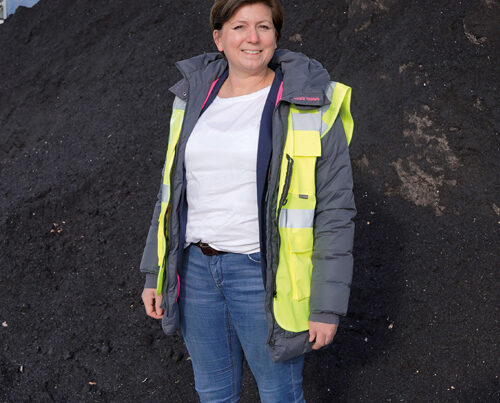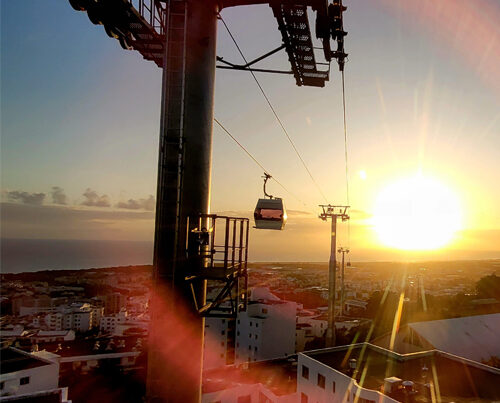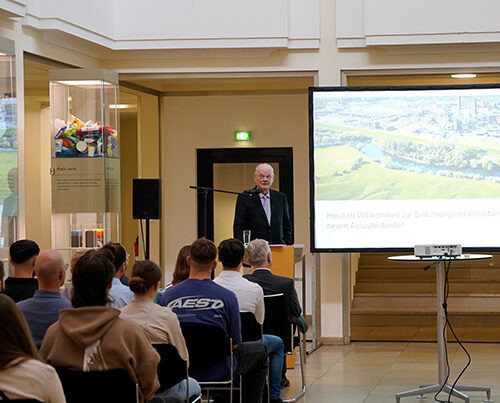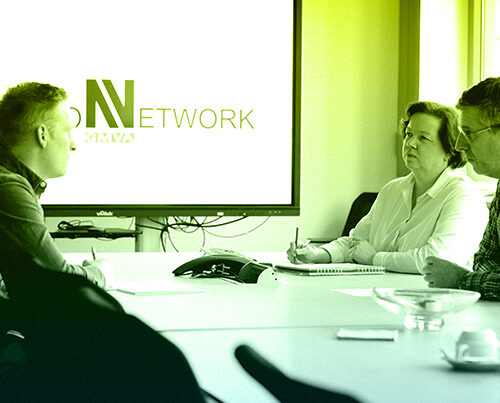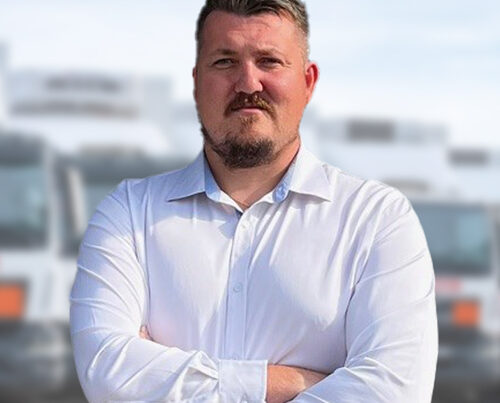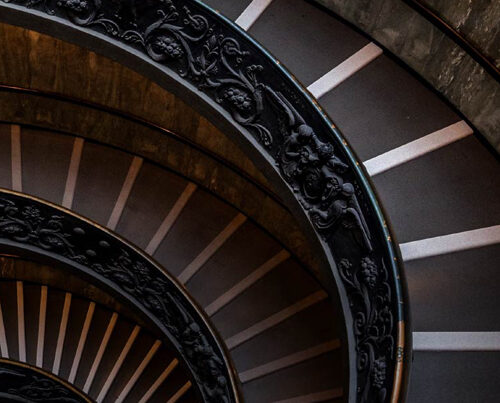Dr Martin Kemmler has been managing director of REMONDIS SAVA’s hazardous waste incineration plant since 2006. He moved to Brunsbüttel in 1998, just a few months after the plant had begun its routine operations. Today, it is one of the most modern plants in Europe and the world’s only facility able to recover iodine. But Dr Kemmler, who was born in the south German region of Swabia, has at least three other passions as well.
You’ll not see any hills when you reach the small port town of Brunsbüttel up in the north. This is where Germany’s ‘flat country’ becomes a little bit flatter as the land ends and the sea begins. Based in Brunsbüttel, REMONDIS SAVA has made the town an international port of call for anyone wishing to offload their hazardous waste. Pesticides, chemicals, paints, acids, solvents, batteries, clinical waste, medicines – all of them hazardous wastes that must be treated responsibly and with great care. Waste that must never be permitted to endanger either humans or the environment. Around 150 tonnes of hazardous waste are thermally treated in Brunsbüttel every day. “The waste undergoes an oxidative treatment in the plant at a temperature of over 1,100°C. In other words, it’s incinerated. This process breaks up the organic substances into their individual inorganic components,” Dr Martin Kemmler explained as he walked across the plant site.
Dr Martin Kemmler, Managing Director of REMONDIS SAVA
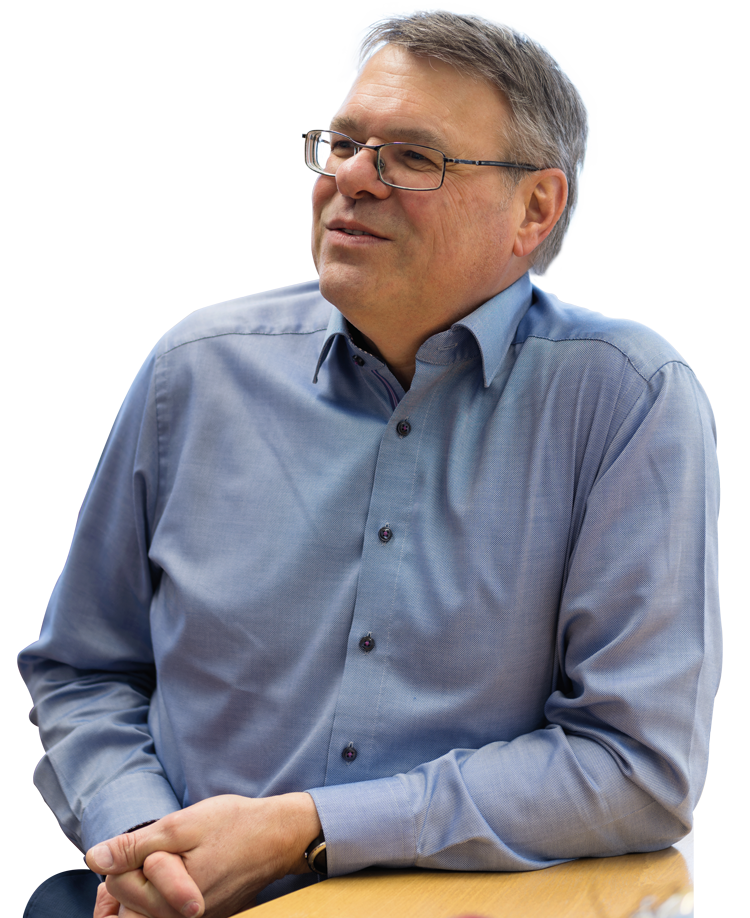
The first few years between Brunsbüttel, Togo, Poland and Nepal
Dr Martin Kemmler studied in Tübingen where he was awarded his PhD in 1993. After spending a few years gathering experience of the hazardous waste business, he joined SAVA’s sales team as a chemist in 1998. “There was room for improvement at the time as far as the organisation of the plant was concerned,” he said, thinking back. First and foremost, it did not have a sales department, which meant that there were not enough volumes of waste for the plant be run effectively. “And so I found myself doing an interesting job way up north right next door to the plant. We solved the problem of the lack of waste within just a few months as we focused on foreign markets of interest, specifically on countries that didn’t have their own incineration plants.” Hazardous waste from the international market has been transported to Brunsbüttel ever since.
“In 2002, we then expanded our portfolio of services by winning international remediation contracts.” A field team of one to three SAVA employees worked on the project on site with people hired locally. In many cases, their tasks involved packing up old pesticides so that they could be incinerated in Brunsbüttel. “We normally had one large contract a year. We succeeded in winning contracts for lucrative projects in Senegal, Cape Verde, Mauretania and Togo as well as in other European countries, such as Albania, Romania, Lithuania, Moldova, Poland, Ukraine and Belarus. We even went to Nepal.” Thanks to these projects, they were able to generate additional income alongside their routine incineration operations and the plant was soon making a profit.
Around 150 tonnes of hazardous waste are thermally treated in Brunsbüttel every day.
Adding iodine to the circular economy
After a good ten years of development work, SAVA has succeeded in recovering iodine from flue gases on an industrial scale. A system downstream from the incineration process removes the substance from the flue gas and concentrates it so it can be reused by industry. Found in some kinds of industrial waste, this trace element used to be deposited below ground together with the filter dust from the incineration plant – which meant that this sought-after raw material was lost forever. This unique iodine recovery plant, which Dr Martin Kemmler developed in collaboration with the south German firm REC53, was commissioned at the beginning of 2023. Today, the plant is being run at full capacity and recovers around 3,000 kilos of iodine every month.
REMONDIS SAVA starts up iodine recovery plant
REMONDIS SAVA’s hazardous waste incineration plant. A look at the technology
What is iodine?
Iodine is a trace element. It is a so-called ‘vulnerable element’ as there are not endless quantities available. It is, for example, added to table salt and used to make medicines.
A plant well below its emission limits
The centrepiece of this plant is its huge furnace. “What’s important here is that all the particles remain in the furnace at around 1,100°C for at least two seconds.” The pollutants are then eliminated in the downstream flue gas cleaning system. The emissions not only meet the permitted limits – they are, in fact, much lower. The plant’s operations are wastewater free, which means that all salts are boiled down and stored below ground. What’s more, metal scrap is removed from the slag and returned to market. The plant is, for the most part, self-sufficient as far as its electricity requirements are concerned. The hot steam is transformed into electrical energy in a turbine. Any excess electricity is fed into the grid.
An innovative iodine recovery system
But that’s not all. Last year, Dr Kemmler and his team commissioned a novel facility able to recover iodine. “The set-up of this facility is completely new as it enables even small volumes of iodine to be recovered and does not limit or interfere with the normal hazardous waste incineration process,” he explained. This facility can be seen as the incineration plant’s eighth cleaning stage. The recovered iodine is a good source of income. So far, the new facility has been able to recover around 3,000 kilos of iodine a month, making it a profitable enterprise.
“Waste is a collection of valuable substances that we can use. That is efficient climate action and environmental protection.”
Dr Martin Kemmler, Managing Director of REMONDIS SAVA
A success thanks to collaborations
The initial idea of recovering iodine goes all the way back to 2013. “This was prompted by an enquiry that I got back then from Dr Steffen Reich – someone I had studied with and then worked with before I joined SAVA. He had founded a company to produce iodine chemicals and needed supplies of the raw material iodine.” Iodine can often be found in hazardous waste but remains unused in conventional incineration systems. “He suggested that we work together to look at ways of recovering these volumes of iodine.” This led to a bachelor dissertation being written about the subject and then a pilot plant being built. “Many tests later, we had finally got the hang of it. We got a great deal of support from Dr Reich here as it was he who suggested a suitable method for isolating iodine that he was already using to treat wastewater,” Dr Martin Kemmler explained. This iodine recovery facility is now a small additional business field for REMONDIS SAVA.
“We should exploit our waste not our planet”
Our tour around the plant took us through the company’s lab and then outside, past the drums and tanks, until we reached the rotary kiln and the innovative iodine recovery facility. “Hi boss!” and “Morning Dr Kemmler” can be heard every time we pass an employee. And then there is a quick chat and bit of work talk. There is a very collegial atmosphere here at REMONDIS SAVA – a good mood despite the dangerous substances being handled. There is even time for a few profound questions. “Waste is only created if substances are mixed together in such a way that they can’t be separated again using an economically viable process,” he commented thoughtfully. He is also well aware that things are unlikely to change for the foreseeable and that there will continue to be an urgent need for plants like the one in Brunsbüttel for many years yet. “We must think about having systems that can recover certain components and elements from waste. Waste is a collection of valuable substances that we can use. That is efficient climate action and environmental protection.”
The musician, guitar maker and gardener
Valuable substances, nature and the environment can be found in other areas of Dr Kemmler’s life as well. Five years ago, he and his wife moved into a 380-year-old thatched house in the countryside and completely retrofitted it to make it energy efficient. “There’s a second house on the property that I use as a workshop and practice room,” he continued. In his free time, Kemmler likes to make and restore jazz guitars – and play them. “We both like being out in the countryside. We grow fruit and vegetables in our garden. My wife is in charge of the vegetables and the fruit is more or less my job. We rarely have to buy fresh produce between May and October.”

The years in the mountains
A further passion of his underlines just how much he loves being outside surrounded by nature. Dr Kemmler has been a keen climber – a rock climber to be precise – from a very early age. He became a qualified mountain tour guide while studying chemistry in Tübingen. For many years, he took Alpine club members to the highest Alpine peaks and up the steepest rock faces and gave rock climbing classes. “I spent ten years of my life living and breathing rock climbing – every free minute I had! When others were off partying at the weekend, we went up the mountains on Friday evening and were out of bed at six on Saturday morning to tackle a tricky rock face.” He has climbed hundreds of difficult rock faces over the years and in 1991 he was even part of the group tackling the Drusenfluh in the Swiss Rätikon Alps with its 600-metre rock face (grade VIII difficulty) for the very first time. “We simply entered the area without finding out the lie of the land beforehand and fought our way up the south wall. We even set up a bivouac at the end.”
Fitter than ever
This is a hobby that he is not prepared to give up, even living in Brunsbüttel where the highest hills are the dykes. He likes to go to the indoor rock-climbing centre run by the German Alpine Club in Hamburg and sometimes goes rock climbing when he is on holiday – preferably with his son or daughter at his side, both of who are climbers. “Very few people my age still go rock climbing,” he said. He chose not to go to the indoor centre during covid as he did not want to risk catching the virus. “I didn’t climb for two years and I wasn’t sure I’d be able to get off the ground the first time I tried again. But I exercise regularly now and I’m fitter than I was ten years ago,” he concluded with a grin on his face.
Image credits: © REMONDIS







